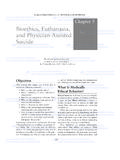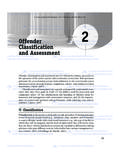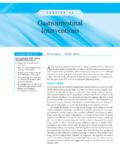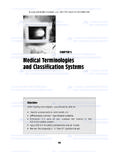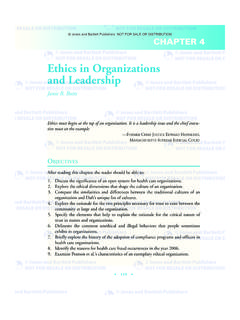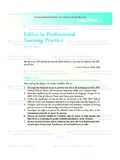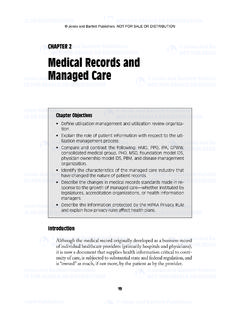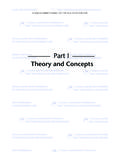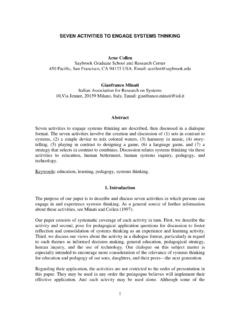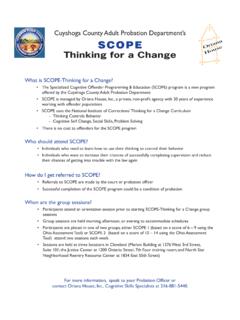Transcription of Organizational Behavior and Management Thinking
1 37 CHAPTER3 Organizational Behaviorand ManagementThinkingSheila K. McGinnisLEARNING OBJECTIVESBy the end of this chapter, the student will be able to: Explain what is meant by Organizational Behavior ; State ten challenges of healthcare Management ; Define what is meant by cognition (or Thinking ) as it relates to be-havior in organizations; Explain how perception and Thinking influence Behavior in theworkplace; Describe the role of Thinking in communication and problem solv-ing in the workplace; Explain the role of Thinking in Organizational change and learning.
2 And, Describe three ways a manager can use knowledge of Thinking processesto improve communication between individuals, and within groupsand 1/31/07 8:47 AM Page 37 Jones and Bartlett Publishers. NOT FOR SALE OR DISTRIBUTIONINTRODUCTIONH ealthcare managers, like all managers in other industries, are responsiblefor effectively using the material, financial, information, and human re-sources of their organizations to deliver services. As you can see from thetopics presented in this textbook, the manager s role requires a wide rangeof both technical and interpersonal skills.
3 Leadership (Chapter 1), moti-vation (Chapter 2), managing healthcare professionals (Chapter 9), andteamwork (Chapter 11) are some of the most important interpersonalskills of a manager, examined at length in other chapters of this text. Thepurpose of this chapter is to provide a sample of how knowledge of humancognition (or Thinking ) provides valuable insight about communicationskills and Organizational Behavior to help future healthcare managers un-derstand human Behavior at work. While this chapter will not make youan expert on Organizational Behavior or managerial Thinking , it will helpyou appreciate how the science of Organizational Behavior and manage-ment Thinking can be used to work with others in a way that leads to ben-eficial outcomes for both people and chapter begins with a brief background on the field of organiza-tional Behavior , describes several Organizational Behavior insights forhealth administration.
4 And then offers an extended discussion and illus-tration of how the healthcare manager can use managerial Thinking and or-ganizational Behavior to achieve important Organizational FIELD OF Organizational BEHAVIORO rganizational behavioris a broad area of Management that studies howpeople act in organizations. Managers can use theories and knowledge oforganizational Behavior to improve Management practices for effectivelyworking with and influencing employees to attain organization goals. Thefield of Organizational Behavior has evolved from the scientific study ofmanagement during the industrial era, administrative theories of the man-ager s role, principles of bureaucracy, and human relations studies ofemployees needs (Scott, 1992).
5 Organizational Behavior is an interdisci-plinary field that draws on the ideas and research of many disciplines thatare concerned with human Behavior and interaction. These include psy-chology, social psychology, industrial psychology, sociology, communica-38 CHAPTER 3 ORGANIZATIONALBEHAVIOR 1/31/07 8:47 AM Page 38 Jones and Bartlett Publishers. NOT FOR SALE OR DISTRIBUTION tions, and anthropology (Robbins, 2003). In this chapter, we will high-light ideas from cognitive psychology (the science of human Thinking ) andtheir extensions to Organizational Behavior SCONTRIBUTION TO MANAGEMENTThe most successful organizations make the best use of their employees talents and energies (Heil, Bennis & Stephens, 2000; Huselid, 1995).
6 Firms that effectively manage employees hold an advantage over theircompetitors. Pfeffer (1998) estimates that organizations can reap a 40%gain by managing people in ways that build commitment, involvement,learning, and Organizational employees are key to an organization s success, how well themanager interacts and works with a variety of individuals is key to a man-ager s success. A manager who is skilled in Organizational Behavior will beable to work effectively with employees and colleagues across the organi-zation, assisting and influencing them to support and achieve TOPICS IN Organizational BEHAVIORO rganizational Behavior is a broad field comprised of many subject behaviors are typically examined at different levels individual be-havior, group Behavior , and collective Behavior across the organization with different issues salient at each level.
7 Studying individual behaviorhelps managers understand how perceptions, attitudes, and personalityinfluence work Behavior , motivation, and other important work out-comes, such as satisfaction, commitment, and learning. Examining inter-actions in the group setting provides insight into the challenges ofleadership, teamwork, communication, decision making, power, and con-flict. Studying organization-wide Behavior (sometimes referred to as orga-nization theory) helps explain how organizations structure work andpower relationships, how they use systems for decision making and con-trol, how an organization s culture affects Behavior , how organizationslearn, and how they adapt to changing competitive, economic, social, andpolitical 1/31/07 8:47 AM Page 39 Jones and Bartlett Publishers.
8 NOT FOR SALE OR DISTRIBUTIONORGANIZATIONAL Behavior ISSUES IN HEALTH ORGANIZATIONSO rganizational Behavior , whether in a healthcare or other type of organi-zation, is concerned with Behavior that occurs under the conditions posedby an Organizational situation. While a specific organization setting maycreate unique challenges or certain sets of problems, the behaviors of in-terest are similar to those of individuals, groups, and often organizations inother settings or industries (Weick, 1969). Thus, healthcare organizationbehavior does not create unique Management issues so much as certain is-sues are more prevalent in health care and occur along with other chal-lenges (Shortell & Kaluzny, 2000).
9 Many of these challenges directly or indirectly affect what is expected ofhealthcare workers and how they behave in healthcare organizations. Healthorganizations are staffed with a highly professional workforce and imposeexacting requirements on how work is organized and accomplished. Thecomplex work has a high risk of serious or deadly error, which necessitateshighly reliable systems of practice at all organization levels. Complex tech-nical and medical systems demand sophisticated technical expertise, whichrequires a highly educated, efficient, and well-coordinated workforce.
10 Pro-fessional workers, especially physicians, work with a great deal of auton-omy and control over the technical and clinical aspects of care delivery. Asa result, healthcare managers are responsible for facilitating the delivery ofhighly complex medical services that must be carefully coordinated by au-tonomous professionals over whom the manager has little direct author-ity all within an industry system that is facing extreme financial andpolicy by rising costs and declining reimbursements, many healthorganizations struggle to survive financially.

